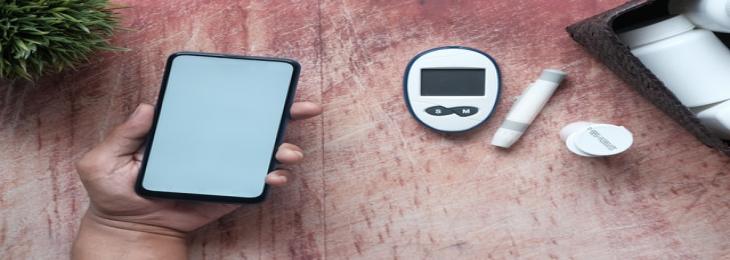
Increasing westernization across developing nations worldwide has inadvertently led to a rapid decline in a healthy lifestyle due to the increasing inclination of the populace towards fast food. This shift towards a sedentary lifestyle is resulting in an alarming increase in diabetes incidence rate. On the contrary, growing consumer health awareness and rising spending on healthcare, characterized by the rising inclination of the populace towards self-medication and health monitoring is fuelling the growth of the glucose monitoring devices market.
Glucose Monitoring Devices Market
According to the report titled ‘Global Continuous Glucose Monitoring (CGM) Market, By Product Type (Transmitters And Receivers, Insulin Pumps, Sensors), By Application (Diabetic Patients, And Diabetes Critical Care Patients), And By Geography - Trends And Forecast To 2024’ published by Coherent Market Insights, the market for continuous glucose monitoring (CGM) systems is expected to surpass US$ 1.0 billion by the end of 2024 at a robust CAGR of 9.8% during 2016–2024.
Underlying factors fueling spurt diabetes incidence rate:
Processed foods: Ready-to-eat processed food lacks essential nutrients and fiber, which adversely affects the body and can lead to various diseases.

Sedentary lifestyles: the Increasing inclination of the populace towards white-collared and desk jobs leads to long working hours with very limited body movement. This sedentary lifestyle has a detrimental effect on health.
Rise in stress levels: Spike in stress levels is a major contributor to various health issues faced by people worldwide.
Consequences of Diabetes:
As per IDF Diabetes Atlas, diabetes is the seventh major cause of death globally. Around 387 million people were affected by diabetes in 2014 and the number is expected to increase to 592 million by 2035. Approximately 4.9 million deaths were reported due to diabetes and related diseases in 2014. Various serious complications and cardiovascular diseases such as heart disease, kidney disease, and stroke are linked to diabetes. Without proper treatment and monitoring, diabetes can silently cripple the body over time as it affects most major organs and can lead to diabetic foot ulcers, which in extreme cases can result in lower-extremity amputation.
Diabetes-related Statistics as per the World Health Organization:
The global prevalence of diabetes among adults over 18 years of age rose from 4.7% in 1980 to 8.5% in 2014
Diabetes prevalence has been rising more rapidly in middle- and low-income countries
Diabetes is a major cause of blindness, kidney failure, heart attacks, stroke, and lower limb amputation
In 2012, an estimated 1.5 million deaths were directly caused by diabetes and another 2.2 million deaths were attributable to high blood glucose levels
Around half of all deaths attributable to high blood glucose occur before the age of 70 years. The World Health Organization (WHO) projects that diabetes will be the seventh leading cause of death by 2030.
A healthy diet, regular physical activity, maintaining normal body weight and avoiding tobacco use are ways to prevent or delay the onset of type 2 diabetes.
Diabetes can be treated and its consequences can be avoided or delayed with a proper healthy diet, adequate physical activity, medication and regular screening and treatment for complications.
Market Dynamics:
Rapidly growing diabetic population, increasing demand for less invasive home use glucose monitoring devices, supportive government initiative for better management of diabetes, increase in research and development activities related to diabetes are crucial factors driving the growth of the glucose monitoring market. Adoption of blood glucose monitoring devices and other supplementary products such as lancets and strips is projected to witness rapid growth due to an increase in institutional and domestic utilization.
Restraints:
Artificial pancreas is a new disruptive technology that is expected to eliminate the dependence on the external administration of insulin to control diabetes. This is expected to adversely affect the market for glucose monitoring devices to a certain extent. Increased awareness about a healthy lifestyle can help delay the onset and even prevent diabetes in the near future, further inhibiting the growth of the market to a certain extent.
Various types of glucose monitoring devices commercially available in the market include continuous glucose monitoring (CGM) devices and self-monitoring devices. CGM devices are wearable gadgets that are used to track glucose all through the day and night, monitoring the variations of sugar levels. These real-time monitoring devices have aided in better management of diabetes.
Diabetes is probably one of the most pertinent and prevalent diseases plaguing mankind. While efforts are on to seek to find a long-term solution to control and in time eradicate this disease, effective management of diabetes using easy-to-use and advanced glucose monitoring devices can most certainly help keep its adverse effects in check.






